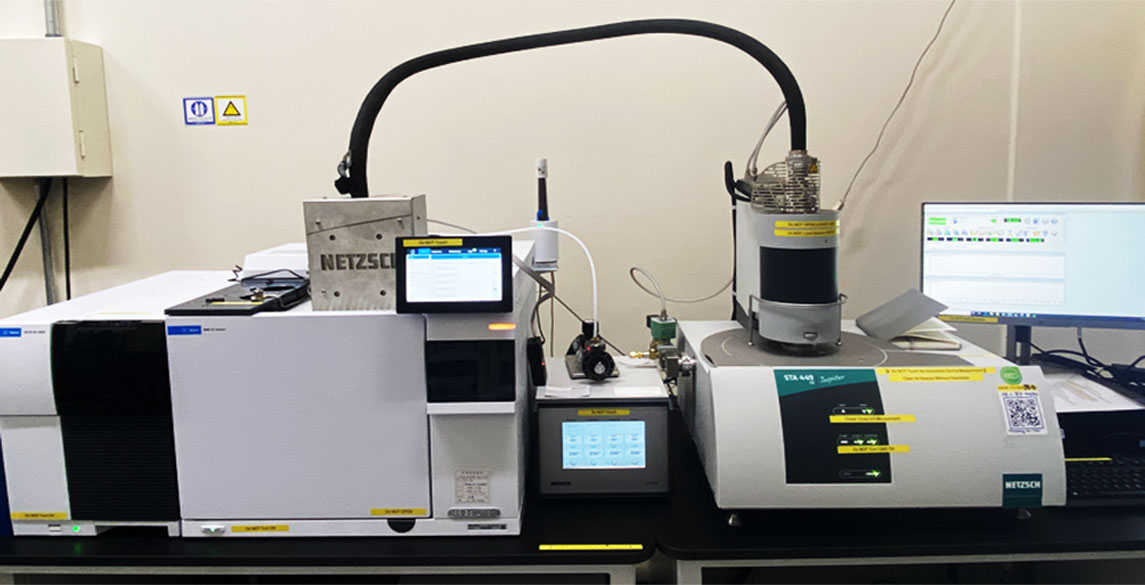

열중량 분석 (Thermogravimetry, TG)
질량분석기 (Mass Spectrometry, MS)
가스크로마토그래피 (Gas Chromatography, GC)
온도 범위: 상온 – 1600oC
승온 속도: 0.001 – 50 K/min
진공도 : 최대 10-2 mbar
온도분해능: 0.001 K
TG 감도: 0.1 microgram
DSC 감도: < 5 microgram/hr
무게측정범위: 35 g (도가니 포함)
샘플크기: 5 cm3 (최대)
Mass Spectrometer: 1.5 – 1022 u
샘플링 속도: 22.2 u/s

핵연료주기 전반에서 취급되는 수용액 및 유기용액 형태 핵·방사성 물질의 미세 구조 및 거동 특성 분석에 활용
고 에너지(~24 keV)를 활용했을 때, 주기율표의 대부분 원소 및 주요 핵종들 (U, Pu 등 17 KeV 이상 필요) 에 대해 X선 스펙트럼이 측정 가능하며, 수 eV 수준의 우수한 분해능을 제공
별도의 전처리 과정을 요하지 않아 다양한 용매에서 활용 가능하며, 분자 산화수, 국부 구조(local structure), 자리 대칭(site symmetry), 상세 구조 정보(리간드 타입, 화학결합 거리, 배위수 등) 분석 가능
X선 소스: 1.2 kW XRD-type tube
가용 에너지: 5-12 keV (Standard operation)
~ 24 keV (High energy mode)
규격: 2 m x 1 m x 1 m
분해능: 1-2 eV
광량: 106 photons/s
계측기: Hybrid photon counting detector